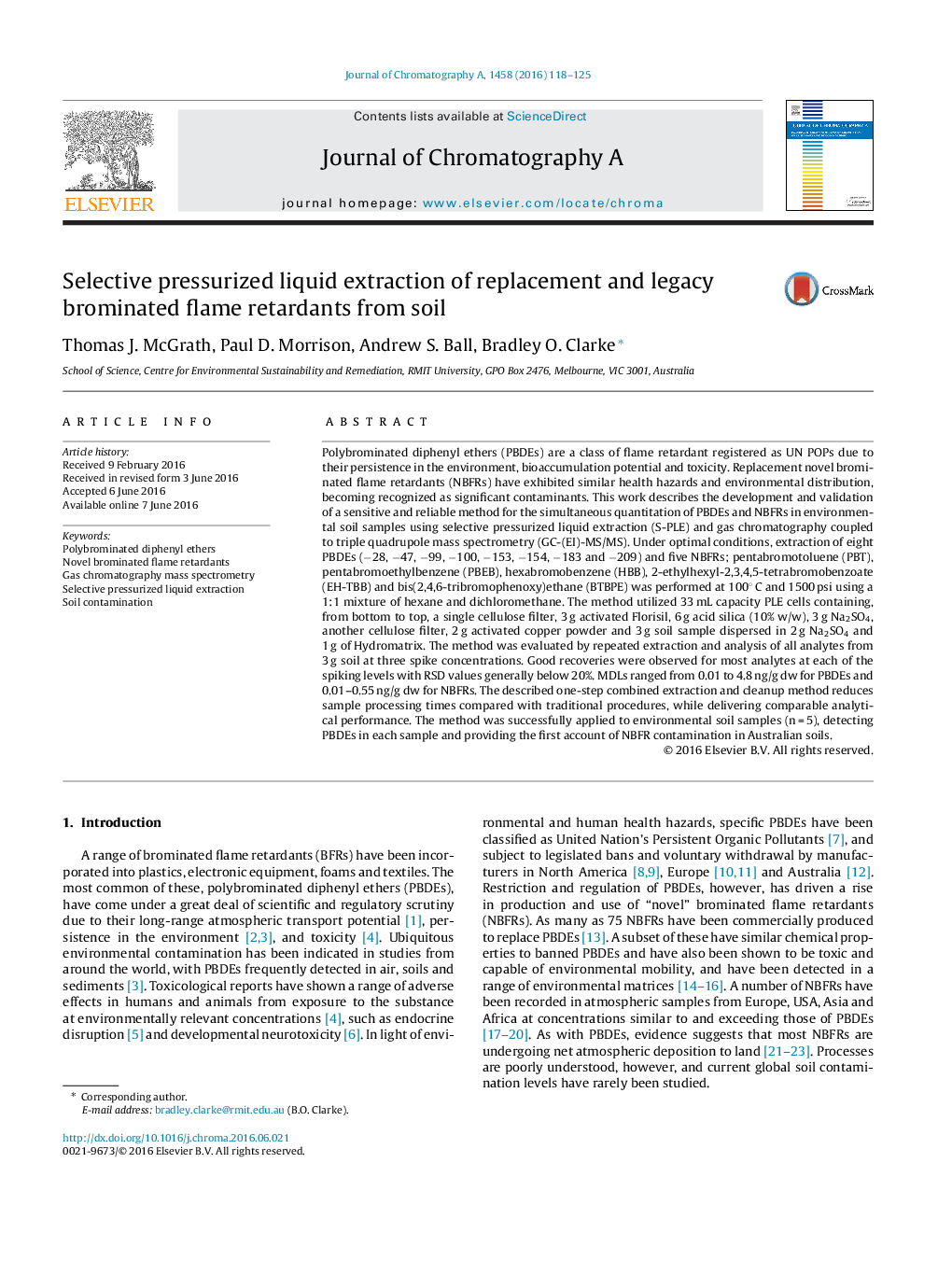| Article ID | Journal | Published Year | Pages | File Type |
|---|---|---|---|---|
| 1198439 | Journal of Chromatography A | 2016 | 8 Pages |
•An analytical method has been developed and validated for the simultaneous extraction of PBDEs and NBFRs from soil.•Quantitation of 8 PBDEs (−28, −47, −99, −100, −153, −154, −183, −209) and 5 NBFRs (PBT, PBEB, HBB, EH-TBB, BTBPE) was achieved using S-PLE followed by GC–MS/MS.•PBDEs were detected in each of the Australian soil samples analysed (n = 5).•NBFR contamination of Australian soil has been reported for the first time.
Polybrominated diphenyl ethers (PBDEs) are a class of flame retardant registered as UN POPs due to their persistence in the environment, bioaccumulation potential and toxicity. Replacement novel brominated flame retardants (NBFRs) have exhibited similar health hazards and environmental distribution, becoming recognized as significant contaminants. This work describes the development and validation of a sensitive and reliable method for the simultaneous quantitation of PBDEs and NBFRs in environmental soil samples using selective pressurized liquid extraction (S-PLE) and gas chromatography coupled to triple quadrupole mass spectrometry (GC-(EI)-MS/MS). Under optimal conditions, extraction of eight PBDEs (−28, −47, −99, −100, −153, −154, −183 and −209) and five NBFRs; pentabromotoluene (PBT), pentabromoethylbenzene (PBEB), hexabromobenzene (HBB), 2-ethylhexyl-2,3,4,5-tetrabromobenzoate (EH-TBB) and bis(2,4,6-tribromophenoxy)ethane (BTBPE) was performed at 100° C and 1500 psi using a 1:1 mixture of hexane and dichloromethane. The method utilized 33 mL capacity PLE cells containing, from bottom to top, a single cellulose filter, 3 g activated Florisil, 6 g acid silica (10% w/w), 3 g Na2SO4, another cellulose filter, 2 g activated copper powder and 3 g soil sample dispersed in 2 g Na2SO4 and 1 g of Hydromatrix. The method was evaluated by repeated extraction and analysis of all analytes from 3 g soil at three spike concentrations. Good recoveries were observed for most analytes at each of the spiking levels with RSD values generally below 20%. MDLs ranged from 0.01 to 4.8 ng/g dw for PBDEs and 0.01–0.55 ng/g dw for NBFRs. The described one-step combined extraction and cleanup method reduces sample processing times compared with traditional procedures, while delivering comparable analytical performance. The method was successfully applied to environmental soil samples (n = 5), detecting PBDEs in each sample and providing the first account of NBFR contamination in Australian soils.
